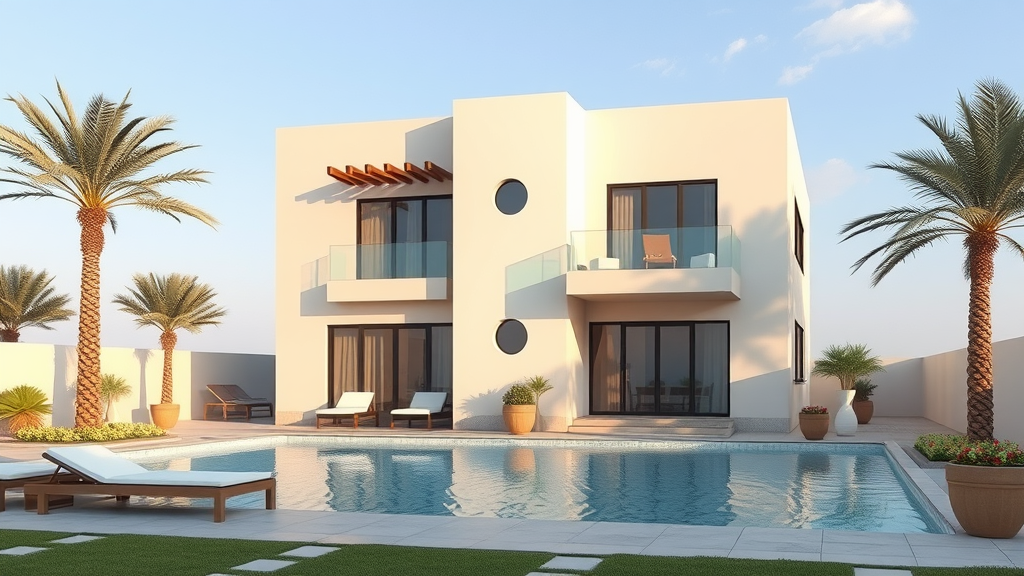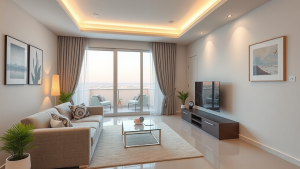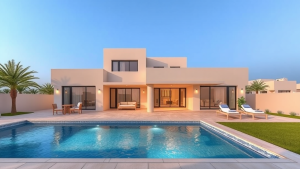Essential steps to check construction quality before purchasing apartments
When you decide to purchase an apartment, ensuring its construction quality is essential to protect your investment and ensure a comfortable living environment. Here are practical steps you can take to check construction quality before making a purchase.
1. research the developer
The first step to verify construction quality is thorough research on the developer. Check their track record and reputation. Look for reviews from previous buyers, and find out how many projects they have completed. A reputable developer usually has a portfolio showcasing their previous works, which is a good indicator of their quality standards.
2. inspect the building materials
Quality construction starts with quality materials. Pay attention to the building materials used for both the exterior and interior. Here’s what to look out for:
- Exterior Walls: Ensure they are built from durable materials that are weather-resistant.
- Insulation: Check the insulation types used for energy efficiency and comfort.
- Windows: Inspect window quality, ensuring they are double-glazed for sound and heat insulation.
- Flooring: Look for high-quality flooring materials that are both aesthetic and durable.
3. conduct a thorough visual inspection
When visiting the property, a visual inspection can reveal a lot about construction quality. Check for:
- Cracks: Look for any cracks on walls, ceilings, or floors. This might indicate structural issues.
- Doors and Windows: Ensure they open and close smoothly, and check for proper sealing and alignment.
- Finishes: Inspect the finish quality of paint, tiles, and fixtures to ensure they meet your standards.
4. verify compliance with building codes
Buildings must comply with local building codes and regulations to ensure safety and quality. Request documentation from the developer that certifies compliance. You may also contact local authorities to confirm that the property meets all regulations.
5. review construction plans
Before making a purchase, ask to see the construction plans. These plans should include details about design, materials, and engineering specifications. Reviewing these documents helps you understand what to expect in terms of quality and durability.
6. seek professional help
If possible, hire a qualified inspector to conduct a detailed examination of the property. They can identify potential issues that might not be visible to an untrained eye. An inspector’s report can provide you with valuable insights and put your mind at ease.
7. check for amenities and common areas
Inspect common areas and amenities since they also reflect the developer’s commitment to quality. Look for:
- Cleanliness: Well-maintained common areas indicate good management.
- Facilities: Look for quality amenities like a gym, swimming pool, and parking areas.
8. investigate the warranty
Most reputable developers offer a warranty that covers construction defects for a specified period. Review the warranty details carefully. A longer warranty period often suggests confidence in the construction quality.
9. speak to current residents
Engaging with current residents can provide invaluable insights about the property. Ask them about their experiences, particularly concerning construction quality, any repair issues, and how responsive the management is to concerns.
10. trust your instincts
Trust your instincts. If something feels off during your inspections or interactions with the developer, don’t hesitate to walk away. There are plenty of options available, and it’s crucial that you feel confident in your choice.
Checking construction quality before purchasing an apartment is vital for ensuring long-term satisfaction and financial security. By following these essential steps, you’ll be well on your way to making a wise investment in your new home.
Common red flags to look for during apartment inspections
When you decide to purchase an apartment, ensuring its quality is crucial. A thorough inspection can save you from future headaches and financial loss. Being aware of common red flags during apartment inspections empowers you to make informed decisions. Here are key indicators to watch out for.
Structural issues
Pay close attention to the building’s structural integrity. Look for visible signs of damage such as:
- Cracks in Walls: Check for large cracks or bulging walls.
- Uneven Floors: Walk on all surfaces. If the floor feels unsteady or slanted, there may be foundation problems.
- Ceiling Cracks: Small cracks might be minor, but larger ones could indicate weight distribution issues.
Water damage
Water damage can lead to mold and serious health issues. Look for:
- Stains on Walls and Ceilings: Yellow or brown spots may indicate past or current leaks.
- Musty Odors: A damp smell could signal hidden mold.
- Check the Plumbing: Look for water stains under sinks or around toilets.
Electrical wiring concerns
Inspecting the electrical system is critical for safety. Watch for these signs:
- Unusual Sounds: Buzzing noises from outlets could indicate faulty wiring.
- Sparking Outlets: If outlets spark when plugged in, this is a major safety concern.
- Insufficient Outlets: Ensure there are enough outlets in each room, particularly in the kitchen and living areas.
Heating and cooling systems
Heating and cooling units play a vital role in your comfort. When inspecting:
- Test the Systems: Turn on the heater and air conditioning to assess their functionality.
- Look for Age: Check the age of the units; older systems may require replacement.
- Inspect Ductwork: Ensure ducts are well-sealed and free of debris.
Appliances condition
If your apartment comes with appliances, inspect them thoroughly:
- Check Age: Older appliances may not be energy efficient.
- Test Each Appliance: Make sure all ovens, refrigerators, and dishwashers are working properly.
- Look for Signs of Wear: Check for rust, dents, or other signs of neglect.
Building amenities
If the apartment boasts shared amenities, evaluate their condition:
- Pool and Gym: Visit these areas to ensure they are well-maintained and clean.
- Common Areas: Look at lobbies and lounges. Cleanliness reflects on overall building management.
- Security Features: Check for functioning security cameras and secure entry points.
Neighborhood factors
The apartment’s location is just as important as its physical condition. Consider:
- Safety: Research crime rates in the area.
- Access to Amenities: Consider convenience to grocery stores, hospitals, and schools.
- Traffic and Noise Levels: Visit at different times to assess noise and traffic issues.
By keeping these common red flags in mind, you can effectively check the quality of the apartment before making a purchase. An informed buyer is a happy buyer, so always take the time to inspect thoroughly. This way, you protect your investment and ensure a safe, comfortable living environment for years to come.
Ensuring a high-quality apartment before making a purchase is crucial for your investment and comfort. By following essential steps, such as conducting thorough inspections and consulting with professionals like engineers or architects, you can gain valuable insights into the construction quality. Look closely at the materials used and the overall design, as these factors will impact your living experience for years to come.
Paying attention to common red flags during your inspections can save you from costly regrets down the line. Signs like poor finishing, visible cracks, and water damage should not be ignored. Additionally, ask about maintenance records and warranties; these documents can provide important context regarding the property’s condition and the builder’s commitment to quality.
Remember, a well-constructed apartment is not just about aesthetics; it’s also about the durability and safety of your future home. Engaging in these essential steps and being vigilant about potential issues will empower you to make an informed decision, ensuring that your new apartment meets both your expectations and quality standards. This diligence helps you secure a living space that is not just a place to reside, but a foundation for a happy and fulfilling life.










